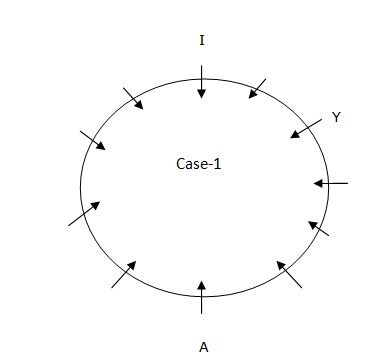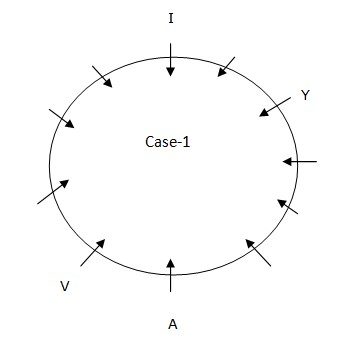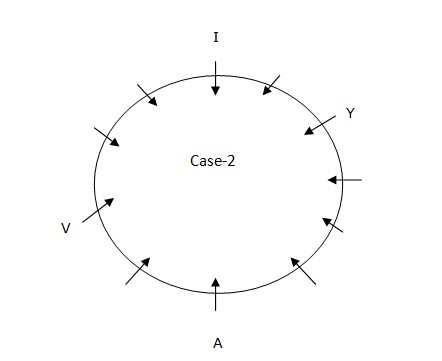Question
Who among the following sits fourth to the right of Q?
Study the following information carefully and answer the questions given below it. There are eleven persons A, P, C, Q, E, R, G, T, I, V and Y are sitting in a circular table facing towards the centre. Only 5 persons sit between A and I when counted from the right of A. Y sits second to the left of I. T sits third to the left of Y. Only four persons sit between Y and V. Number of letters between E and I in the alphabetical series is same as the number of persons sitting between A and G. Q is an immediate neighbour of V. P sits fifth to the right of Q. E sits second to the left of C.Solution
Only 5 persons sit between A and I when counted from the right of A. Y sits second to the left of I.  Only four persons sit between Y and V. Here we get two possibilities Case (1) and Case (2).
Only four persons sit between Y and V. Here we get two possibilities Case (1) and Case (2). 
 Q is an immediate neighbor of V. P sits fifth to the right of Q.
Q is an immediate neighbor of V. P sits fifth to the right of Q. 
 T sits third to the left of Y. E sits second to the left of C. Here Case 1 gets eliminated.
T sits third to the left of Y. E sits second to the left of C. Here Case 1 gets eliminated. 
 Number of letters between E and I in the alphabetical series is same as the number of persons sitting between A and G.
Number of letters between E and I in the alphabetical series is same as the number of persons sitting between A and G. 
In Java, what will be the output of the following code snippet?
public class Test {
public static void main(String[] args) { <...
Which sorting algorithm is considered the most efficient for large datasets with no additional memory constraints?
What is a fundamental characteristic of a singly linked list?
Which cryptographic concept ensures that data integrity is preserved and cannot be altered during transmission?
Which of the following correctly describes the primary difference between Cross-Site Request Forgery (CSRF) and Cross-Site Scripting (XSS)?
...Which of the following is a core characteristic of Big Data?
In the context of asymmetric encryption, which of the following is a key feature of public-private key pairs?
- Computer Architecture
Which architectural feature is crucial for improving the performance of modern multi-core processors?
In a binary tree, what is the maximum number of children a node can have?
What is the base case in a recursive function?
Relevant for Exams:



